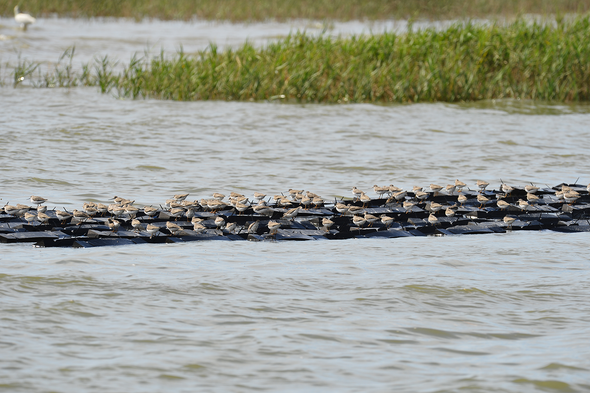As development and rising seas diminish roosting sites, shell-filled bags provide “islands” to rest and refuel
By Priyanka Runwal on March 4, 2020

Terek sandpipers on a floating roost in the Geum Estuary in South Korea. Credit: Hong-Tae Jeon and Young-Min Moon
Standing atop a 16-foot-high seawall on South Korea’s western coast, Chris Purnell and his colleagues slide mesh bags stuffed with empty oyster shells down onto the sandy mudflats of the Geum Estuary. They then clip the heavy bags to ropes and drag them into the gently lapping waters that run into the Yellow Sea.
Purnell’s aim is for these bags, attached to foam floats and lashed together in clusters up to 80 feet wide, to act as artificial roosting sites for the tens of thousands of migratory shorebirds that traverse the East Asian-Australasian Flyway. Coastal development has deprived these travelers of crucial resting spots, leading to drastic shorebird declines in key stopover areas like this one. “We’re hoping this could be a rapid-response intervention,” says Purnell, wetland birds program manager at Birdlife Australia, a nonprofit conservation organization.
No comments:
Post a Comment